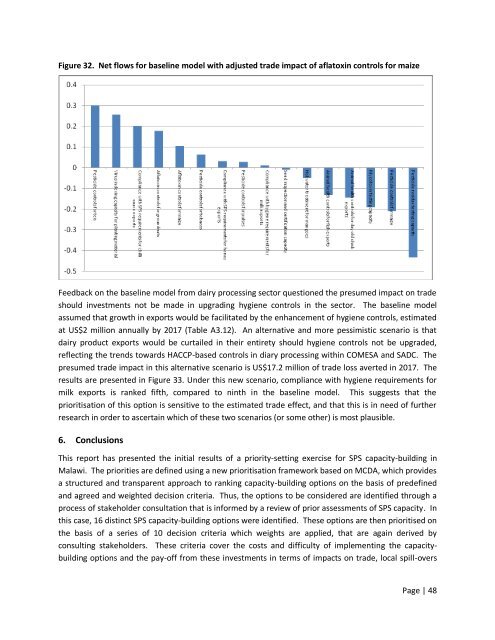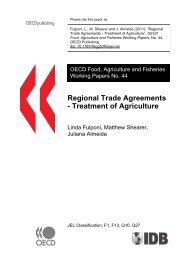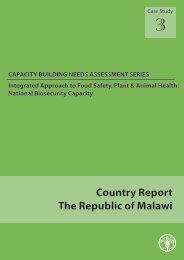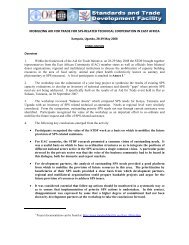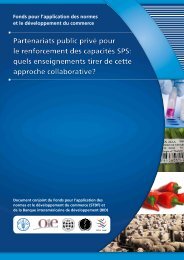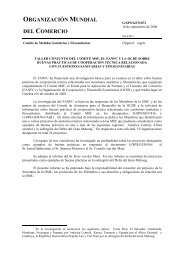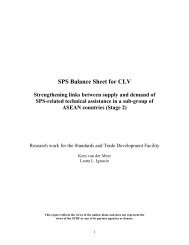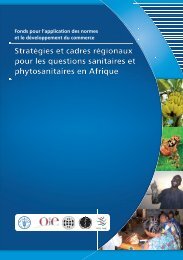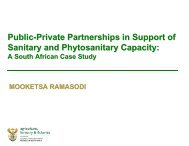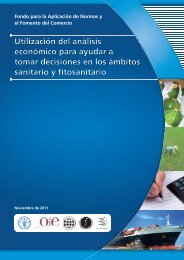MCDA Final Report Malawi - Standards and Trade Development ...
MCDA Final Report Malawi - Standards and Trade Development ...
MCDA Final Report Malawi - Standards and Trade Development ...
You also want an ePaper? Increase the reach of your titles
YUMPU automatically turns print PDFs into web optimized ePapers that Google loves.
Figure 32. Net flows for baseline model with adjusted trade impact of aflatoxin controls for maize<br />
Feedback on the baseline model from dairy processing sector questioned the presumed impact on trade<br />
should investments not be made in upgrading hygiene controls in the sector. The baseline model<br />
assumed that growth in exports would be facilitated by the enhancement of hygiene controls, estimated<br />
at US$2 million annually by 2017 (Table A3.12). An alternative <strong>and</strong> more pessimistic scenario is that<br />
dairy product exports would be curtailed in their entirety should hygiene controls not be upgraded,<br />
reflecting the trends towards HACCP-based controls in diary processing within COMESA <strong>and</strong> SADC. The<br />
presumed trade impact in this alternative scenario is US$17.2 million of trade loss averted in 2017. The<br />
results are presented in Figure 33. Under this new scenario, compliance with hygiene requirements for<br />
milk exports is ranked fifth, compared to ninth in the baseline model. This suggests that the<br />
prioritisation of this option is sensitive to the estimated trade effect, <strong>and</strong> that this is in need of further<br />
research in order to ascertain which of these two scenarios (or some other) is most plausible.<br />
6. Conclusions<br />
This report has presented the initial results of a priority-setting exercise for SPS capacity-building in<br />
<strong>Malawi</strong>. The priorities are defined using a new prioritisation framework based on <strong>MCDA</strong>, which provides<br />
a structured <strong>and</strong> transparent approach to ranking capacity-building options on the basis of predefined<br />
<strong>and</strong> agreed <strong>and</strong> weighted decision criteria. Thus, the options to be considered are identified through a<br />
process of stakeholder consultation that is informed by a review of prior assessments of SPS capacity. In<br />
this case, 16 distinct SPS capacity-building options were identified. These options are then prioritised on<br />
the basis of a series of 10 decision criteria which weights are applied, that are again derived by<br />
consulting stakeholders. These criteria cover the costs <strong>and</strong> difficulty of implementing the capacitybuilding<br />
options <strong>and</strong> the pay-off from these investments in terms of impacts on trade, local spill-overs<br />
Page | 48


